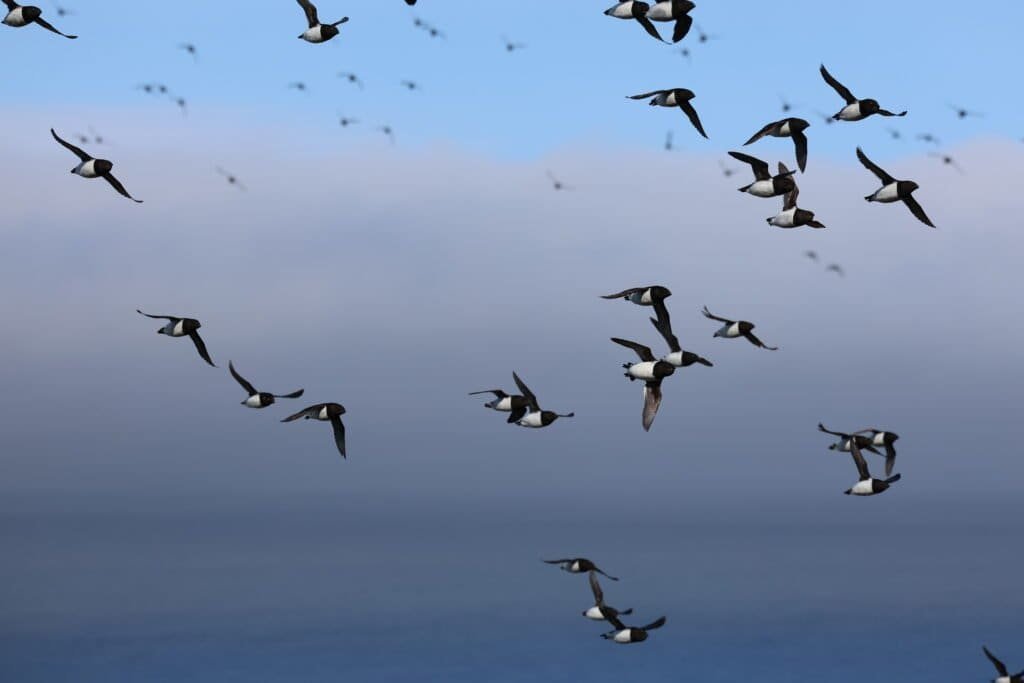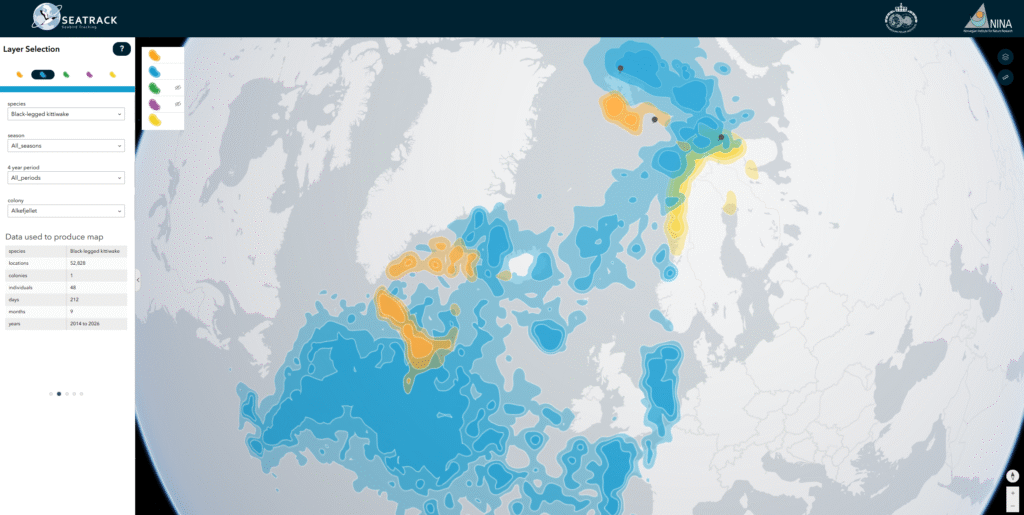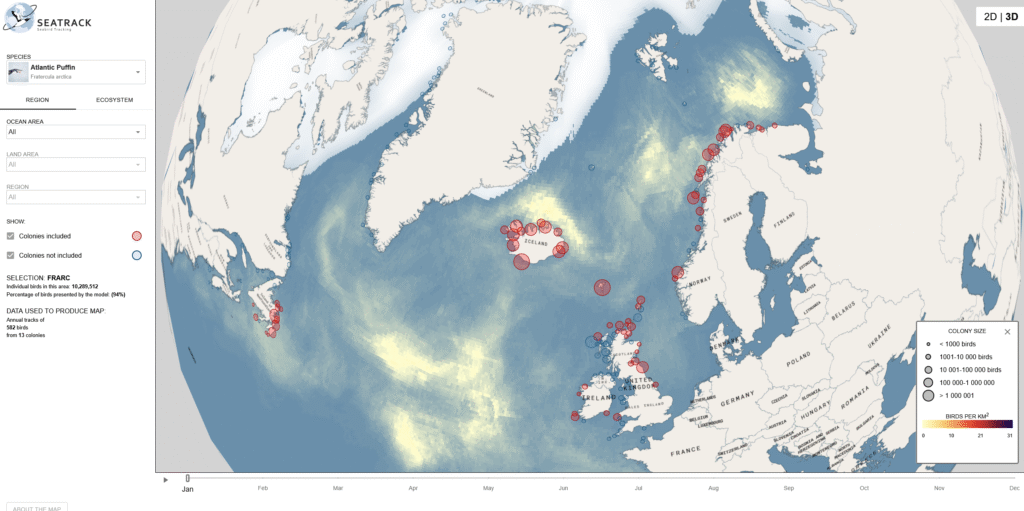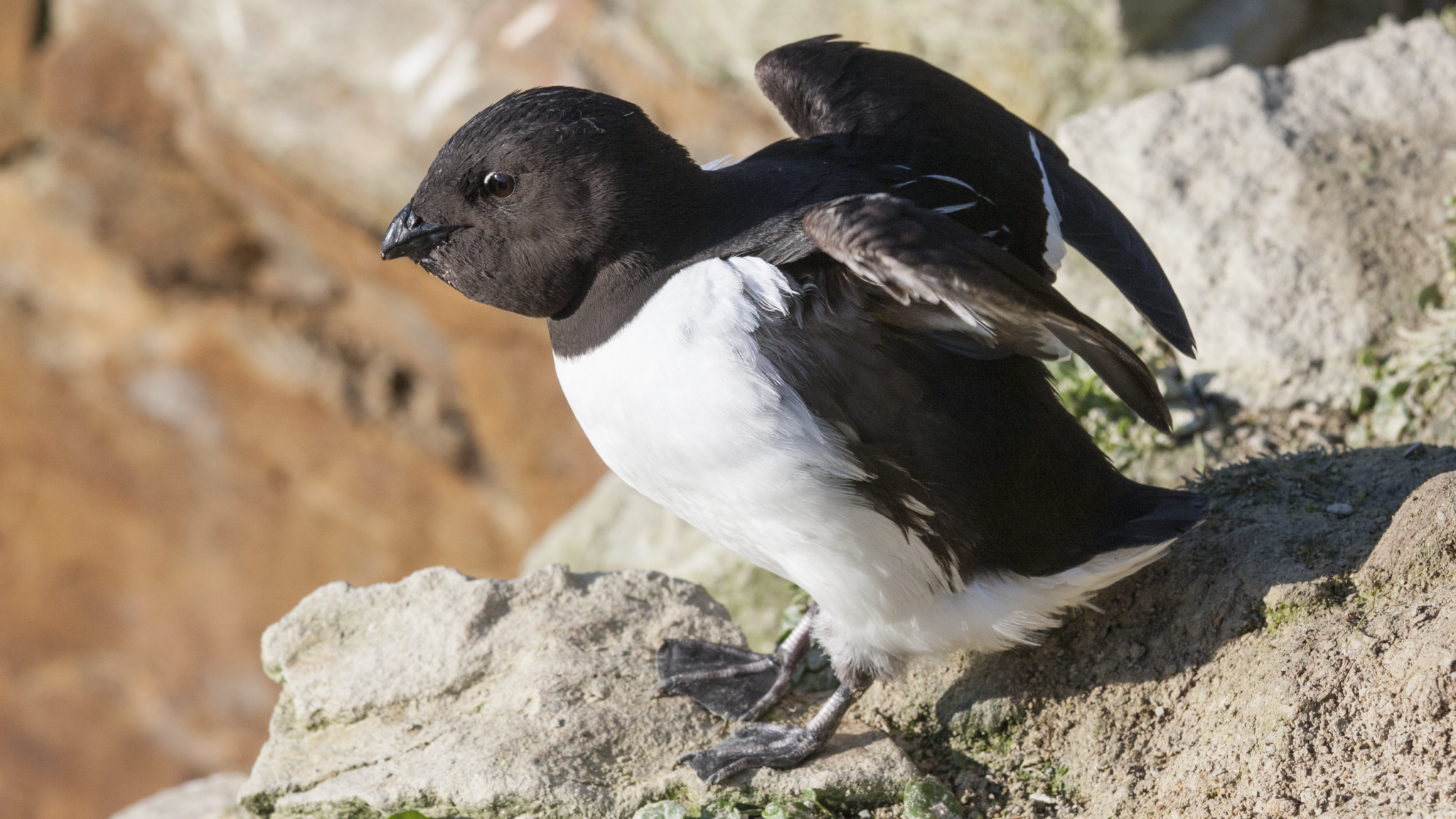Little auks (Alle alle), representing one of five pelagic diving species within the scope of the project, are being instrumented with GLS loggers at 7 SEATRACK localities.
The Little auk has been a SEATRACK species sine the beginning of the programme in 2014. Since 2019 SEATRACK is also deploying GLS loggers on little auk chicks at two locations (Hornsund and Bjørnøya).
Little auks are estimated to be one of the most numerous seabird species in the world and classified as being of “least concern” by the IUCN as well as for the Svalbard population on the Norwegian red list.

The little auk or dovkie is a high-arctic species that breeds on eastern Baffin Island (Canada), Greenland, Jan Mayen, Svalbard (including Bjørnøya), Franz Josef Land, Novaya Zemlya and Severnaya Zemlya. They are the smallest of the European auks and have a stocky build, with a short neck and short bill. In summer plumage the head and neck are brown-black except for a white patch above the eye. The upper-parts are black except for a white wing band and the under-parts white.

Little auks feed in both inshore and offshore waters. Their main food during the breeding season consists of small crustaceans. Outside the breeding season, the little auks are pelagic where copepods, especially Calanus spp. are especially important in the diet. Calanus glacialis has been found to dominate the diet in areas with cold arctic water, whereas the smaller and less energy rich C. finmarchicus dominates in areas influenced by warmer Atlantic water.
Featured image: Sébastien Descamps.

View data




